
Concept explainers
(a)
Interpretation:
The structure of the nucleophile that could be used to convert the iodoethane into
Concept introduction:
The nucleophilic substitution reactions are the reactions in which one nucleophile is substituted by the other nucleophile. These reactions depend upon the nucleophilicity and concentration of the incoming nucleophile.
The
Answer to Problem 9.52AP
The structure of the nucleophile that could be used to convert them into
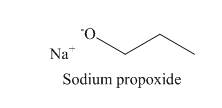
Explanation of Solution
The
The reaction that takes place to convert the iodoethane into the
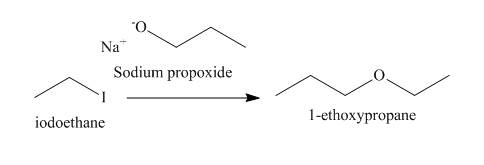
Figure 1
The structure of the nucleophile that could be used to convert the iodoethane to give

Figure 2
The structure of the nucleophile that could be used to convert the iodoethane to give the given compound is shown in Figure 2.
(b)
Interpretation:
The structure of the nucleophile that could be used to convert the iodoethane to give the
Concept introduction:
The nucleophilic substitution reactions are the reactions in which one nucleophile is substituted by another nucleophile. These reactions depend upon the nucleophilicity and concentration of the incoming nucleophile.
The
Answer to Problem 9.52AP
The structure of the nucleophile that could be used to convert the iodoethane to give the
Explanation of Solution
The
The reaction that takes place to convert the iodoethane into
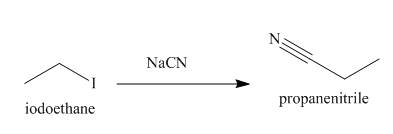
Figure 3
The structure of the nucleophile that could be used to convert the iodoethane to give the
The structure of the nucleophile that could be used to convert the iodoethane to give the
(c)
Interpretation:
The structure of the nucleophile that could be used to convert the iodoethane to give the given compound is to be stated.
Concept introduction:
The nucleophilic substitution reactions are the reactions in which one nucleophile is substituted by another nucleophile. These reactions depend upon the nucleophilicity and concentration of the incoming nucleophile.
The
Answer to Problem 9.52AP
The structure of the nucleophile that could be used to convert the iodoethane to give the given compound is shown below.
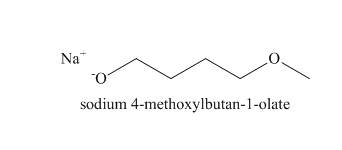
Explanation of Solution
The
The reaction that takes place to convert the iodoethane into the given compound is shown below.

Figure 4
The structure of the nucleophile that could be used to convert the iodoethane to give the given compound is shown below.

Figure 5
The structure of the nucleophile that could be used to convert the iodoethane to give the given compound is shown in the Figure 5.
(d)
Interpretation:
The structure of the nucleophile that could be used to convert the iodoethane to give the given compound is to be stated.
Concept introduction:
The nucleophilic substitution reactions are the reactions in which one nucleophile is substituted by another nucleophile. These reactions depend upon the nucleophilicity and concentration of the incoming nucleophile.
The
Answer to Problem 9.52AP
The structure of the nucleophile that could be used to convert the iodoethane to give the given compound is shown below.
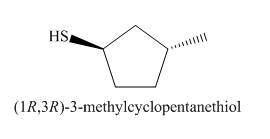
Explanation of Solution
The
The reaction that takes place to convert the iodoethane into the given compound is shown below.

Figure 6
The structure of the nucleophile that could be used to convert the iodoethane to give the given compound is shown below.

Figure 7
The structure of the nucleophile that could be used to convert the iodoethane to give the given compound is shown in the Figure 7.
(e)
Interpretation:
The structure of the nucleophile that could be used to convert the iodoethane to give
Concept introduction:
The nucleophilic substitution reactions are the reactions in which one nucleophile is substituted by another nucleophile. These reactions depend upon the nucleophilicity and concentration of the incoming nucleophile.
The
Answer to Problem 9.52AP
The structure of the nucleophile that could be used to convert the iodoethane to give
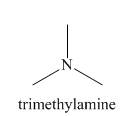
Explanation of Solution
The
The reaction that takes place to convert the iodoethane into

Figure 8
The structure of the nucleophile that could be used to convert the iodoethane to give

Figure 9
The structure of the nucleophile that could be used to convert the iodoethane to give
Want to see more full solutions like this?
Chapter 9 Solutions
ORGANIC CHEMISTRY SAPLING ACCESS + ETEX
- Construct a molecular orbital energy-level diagram for BeH2. Sketch the MO pictures (schematic representation) for the HOMO and LUMO of BeH2 [Orbital Potential Energies, H (1s): -13.6 eV; Be (2s): -9.3 eV, Be (2p): -6.0 eV]arrow_forwardIndicate the isomers of the A(H2O)6Cl3 complex. State the type of isomerism they exhibit and explain it briefly.arrow_forwardState the formula of the compound potassium μ-dihydroxydicobaltate (III) tetraoxalate.arrow_forward
- Consider the reaction of the cyclopentanone derivative shown below. i) NaOCH2CH3 CH3CH2OH, 25°C ii) CH3!arrow_forwardWhat constitutes a 'reference material', and why does its utilization play a critical role in the chemical analysis of food products? Provide examples.arrow_forwardExplain what calibration is and why it is essential in relation to food analysis. Provide examples.arrow_forward
- The cobalt mu-hydroxide complex cobaltate(III) of potassium is a dinuclear complex. Correct?arrow_forwardThe cobalt mi-hydroxide complex cobaltate(III) of potassium is a dinuclear complex. Correct?arrow_forward3. Arrange the different acids in Exercise B # 2 from the strongest (1) to the weakest acid (10). 1. 2. (strongest) 3. 4. 5. 6. 7. 8. 9. 10 10. (weakest)arrow_forward
- Name Section Score Date EXERCISE B pH, pOH, pка, AND PKD CALCULATIONS 1. Complete the following table. Solution [H+] [OH-] PH РОН Nature of Solution A 2 x 10-8 M B 1 x 10-7 M C D 12.3 6.8 2. The following table contains the names, formulas, ka or pka for some common acids. Fill in the blanks in the table. (17 Points) Acid Name Formula Dissociation reaction Ka pka Phosphoric acid H₂PO₁ H3PO4 H++ H₂PO 7.08 x 10-3 Dihydrogen H₂PO H₂PO H+ HPO 6.31 x 10-6 phosphate Hydrogen HPO₁ 12.4 phosphate Carbonic acid H2CO3 Hydrogen HCO 6.35 10.3 carbonate or bicarbonate Acetic acid CH,COOH 4.76 Lactic acid CH₂CHOH- COOH 1.38 x 10 Ammonium NH 5.63 x 10-10 Phenol CH₂OH 1 x 10-10 Protonated form CH3NH3* 3.16 x 10-11 of methylaminearrow_forwardIndicate whether it is true that Co(III) complexes are very stable.arrow_forwardMnO2 acts as an oxidant in the chlorine synthesis reaction.arrow_forward
